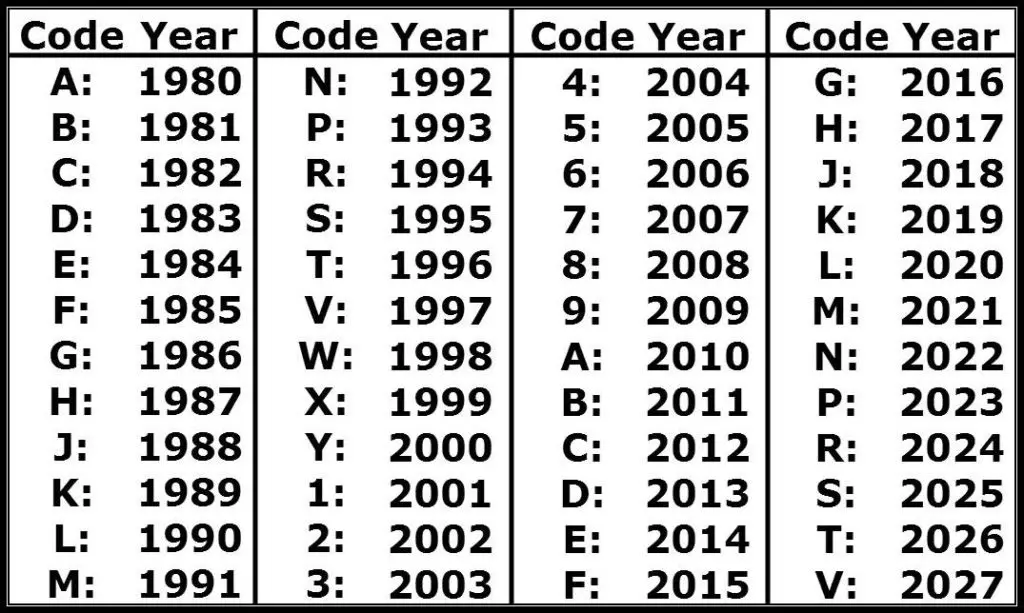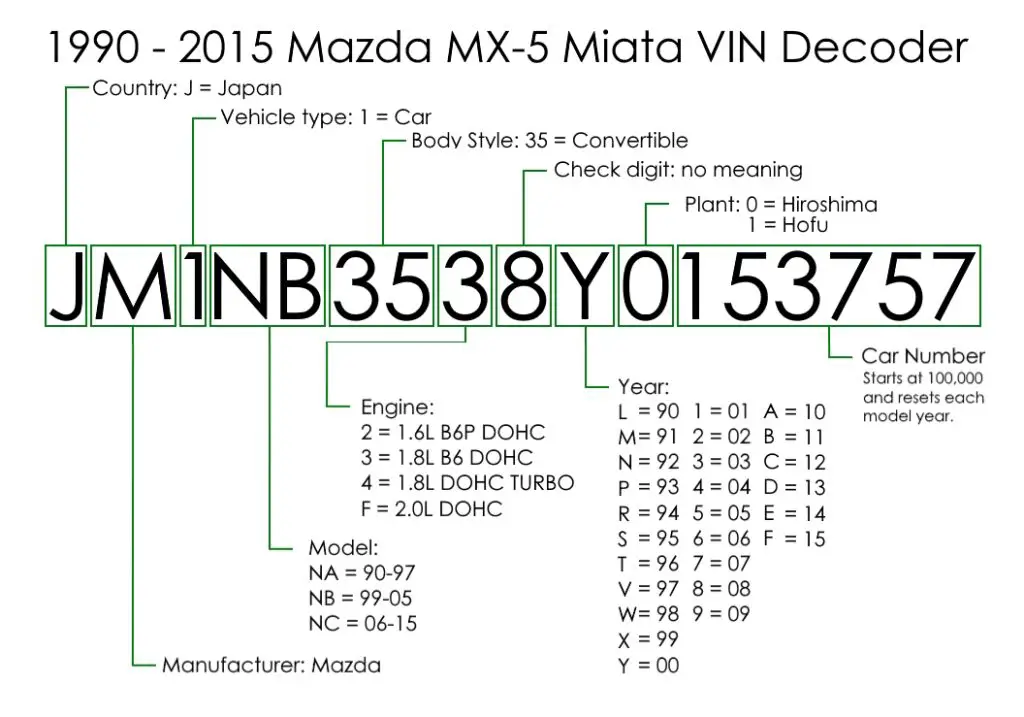Vehicle model by VIN can be identified by decoding the 17-character code, revealing details like make, model, and year of manufacture. VIN decoders online can provide this information quickly.
A Vehicle Identification Number (VIN) is a unique identifier assigned to every motor vehicle, providing crucial information about its make, model, year of manufacture, and other key attributes. The VIN is a critical tool for vehicle owners, car buyers, mechanics, and even insurance companies to gather information about a car’s history and specifications. One of the most valuable uses of the VIN is to determine the vehicle model, as it contains a wealth of information about the vehicle.
In this blog post, we will delve into the significance of a VIN, how to decode it to reveal the vehicle model, and why this information is important for various automotive tasks.

Contents
What Is a VIN and Why Is It Important?
The VIN is a standardized 17-character code that acts as a fingerprint for your vehicle. It is unique to each vehicle and contains important details that can identify its origin, features, and history. The VIN is used by manufacturers, law enforcement, and regulatory bodies to track vehicles, ensure they are correctly registered, and verify their authenticity.
Key Information Encoded in the VIN
A VIN provides a variety of details about a vehicle. Below are some key pieces of information that can be derived from the VIN:
- Make and Model: Helps identify the manufacturer and the specific model of the vehicle.
- Year of Manufacture: Indicates the year the vehicle was built.
- Engine Type: Provides details about the type of engine and its specifications.
- Manufacturing Plant: Identifies where the vehicle was assembled.
- Vehicle Type: Provides details about the body style, such as sedan, SUV, or coupe.
- Transmission Type: Whether the vehicle has a manual or automatic transmission.
Decoding a VIN to Reveal the Vehicle Model
The process of decoding a VIN involves breaking down the 17-character code into meaningful sections. Each section of the VIN has a specific purpose and reveals detailed information about the vehicle, including its model.
Structure of a VIN
A VIN is broken into three primary sections: the World Manufacturer Identifier (WMI), the Vehicle Descriptor Section (VDS), and the Vehicle Identifier Section (VIS). Let’s explore each section in detail.
1. World Manufacturer Identifier (WMI)
The WMI is made up of the first three characters of the VIN. These characters identify the manufacturer and the country of origin. The first character represents the country where the vehicle was manufactured, while the second and third characters identify the manufacturer or the company that produced the vehicle.
- For example, 1 in the first position signifies the United States, J represents Japan, and W stands for Germany.
- The second and third characters represent the manufacturer. For instance, 1F indicates Ford, 2G indicates General Motors, and JH indicates Honda.
2. Vehicle Descriptor Section (VDS)
Characters 4 through 9 make up the VDS, which provides information about the vehicle’s model, body type, engine type, and restraint system. This section is often used by manufacturers to identify the specific attributes of the vehicle, such as whether it has four doors, a V6 engine, or a standard safety system.
- Characters 4–8: These characters provide information about the vehicle’s model, body style, engine type, and transmission.
- Character 9: This is a check digit used to validate the VIN. It is calculated through a formula that takes into account the other 16 characters.
3. Vehicle Identifier Section (VIS)
Characters 10 through 17 make up the VIS, which identifies the vehicle’s unique characteristics and serial number. This section is unique to each vehicle and helps distinguish it from others.
- Character 10: This character indicates the model year of the vehicle. For instance, A represents 1980, B represents 1981, and so on. The model year is important for determining the vehicle’s age and specific features.
- Character 11: This character indicates the manufacturing plant. For example, F might indicate a Ford plant in Michigan.
- Characters 12–17: These characters represent the unique serial number assigned to the vehicle by the manufacturer. This is what differentiates one vehicle from another.
How to Decode Vehicle’s Model Using the VIN
Now that you understand the structure of the VIN, you can easily decode it to find the specific vehicle model. Here are the steps to follow:
1. Locate the VIN
The first step is to find the VIN on your vehicle. Common locations for the VIN include:
- The dashboard near the windshield on the driver’s side.
- The driver’s side door frame, often on a metal plate near the door latch.
- The vehicle’s registration documents or insurance card.
2. Use a VIN Decoder Tool
There are various online tools and resources that can help you decode the VIN quickly and efficiently. Some of the most popular tools include:
By entering your VIN into these tools, you can instantly retrieve information about your vehicle, including its make, model, engine type, and manufacturing plant.
3. Manually Decode the VIN
If you prefer to decode the VIN manually, refer to the VIN breakdown mentioned earlier. Start by identifying the WMI, then proceed to the VDS and VIS sections to determine the vehicle’s model, year, engine, and other important details.

Practical Applications of VIN Decoding
Knowing the vehicle’s model through its VIN can be extremely useful in a variety of scenarios. Here are some practical uses:
1. Parts Compatibility
When replacing or upgrading parts, knowing the exact model of your vehicle is essential for ensuring compatibility. A VIN decoder can help you find the exact specifications of your vehicle, making it easier to select the correct parts for repairs or maintenance.
2. Vehicle History Reports
The VIN is used to generate vehicle history reports that provide information about the vehicle’s past, such as accidents, ownership changes, and service records. These reports are essential when buying a used vehicle, as they help you assess its condition and potential issues.
3. Insurance and Registration
When registering or insuring your vehicle, the VIN helps ensure that the vehicle is correctly identified in official records. It can also be used to verify the vehicle’s history and confirm that the vehicle is not stolen.
4. Recalls and Safety Information
The VIN is crucial for determining whether a vehicle is subject to any recalls. By checking the VIN with the manufacturer’s database or the National Highway Traffic Safety Administration (NHTSA), you can find out if your vehicle has any safety issues or necessary repairs.
Limitations and Considerations
While decoding a VIN is an extremely useful tool, there are a few limitations to keep in mind:
- Non-Standardized VINs Before 1981: Vehicles manufactured before 1981 may have different VIN formats, making it difficult to decode them accurately.
- Manufacturer Variations: Some manufacturers may use proprietary codes that aren’t universally recognized. In these cases, it’s best to consult the manufacturer for detailed decoding.
- Potential Errors in VIN Decoding: Always cross-check the information you obtain from a VIN decoder with official documentation to ensure accuracy.
Frequently Asked Questions
Here are some FAQs about vehicle model by vin –
1. Where can I find my vehicle’s VIN?
The VIN is typically located on the dashboard near the windshield, on the driver’s side door frame, or on the vehicle’s registration documents.
2. Can I decode a VIN from a vehicle manufactured before 1981?
Vehicles manufactured before 1981 may have a different VIN format, making them harder to decode. It’s best to consult the manufacturer for accurate information.
3. Are all VIN decoder tools accurate?
Most VIN decoder tools are reliable, but it’s always a good idea to cross-check the information with official documents to ensure accuracy.
4. Can I tell if a vehicle has been in an accident by its VIN?
Yes, you can obtain a vehicle history report using the VIN to learn if the vehicle has been in an accident, as well as its ownership and service history.
5. Can I use the VIN to check if a vehicle has a recall?
Yes, the VIN can be checked with the manufacturer or the NHTSA to determine if a vehicle has any active recalls.
Conclusion
Decoding a vehicle’s model using the VIN is a straightforward process that can provide valuable information about the vehicle’s specifications and history. By understanding the structure and meaning of each character in the VIN, you can accurately identify the model, engine type, year of manufacture, and much more. Whether you’re buying a new or used car, maintaining your vehicle, or verifying its history, the VIN is an indispensable tool for ensuring that you have all the necessary information.